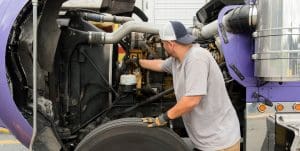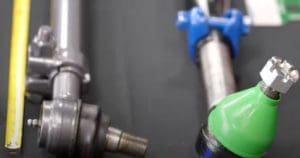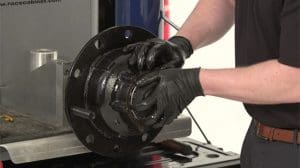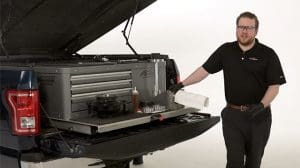En el acelerado mundo del transporte por carretera comercial, la gestión eficaz de la flota comienza con recogidas y entregas oportunas, pero no termina ahí. Es un esfuerzo multifacético que se esfuerza continuamente por mejorar los procesos, optimizar la productividad, mejorar las medidas de seguridad y, por supuesto, maximizar los ingresos. No es una tarea sencilla.
Y si bien no existe una respuesta “fácil” ni una “solución milagrosa” para superar los desafíos diarios que enfrentan los administradores de flotas, existen algunos pasos y estrategias clave que nos gustaría resaltar (desde el mantenimiento preventivo hasta la automatización) que pueden servir como guía útil para Mejore sus prácticas de gestión de flotas en los próximos meses.
El mantenimiento preventivo de la flota es clave
Mantener una flota no se trata sólo de arreglar las cosas cuando se estropean. Se trata de trabajar para prevenir esas averías en primer lugar. Esto incluye el uso de piezas y componentes de calidad en sus vehículos, estar al tanto de los ciclos de mantenimiento regulares y mantenerse al día con Estándares TMC. El mantenimiento preventivo de flotas es un enfoque proactivo que no solo garantiza la seguridad de sus conductores y de la carga, sino que también tiene como objetivo minimizar el tiempo de inactividad inesperado y los costos de reparación. En pocas palabras, las prácticas de mantenimiento saludables son clave para operaciones seguras y un rendimiento óptimo de sus vehículos en carretera.
El primer paso para prevenir averías y otros problemas es utilizar piezas de calidad. Desafortunadamente, hay piezas "parecidas" en la industria que no utilizan los mismos materiales y no se someten a pruebas ni controles de calidad rigurosos de STEMCO. Puede parecer que está ahorrando dinero al principio del costo del equipo, pero si el equipo no es confiable, a menudo pagará mucho más más adelante cuando esto afecte los envíos, el tiempo de inactividad y su reputación. Asegúrese de utilizar productos certificados y de calidad y tendrá el mejor paso adelante.
Reduzca los costos de combustible de la flota… ¡a toda costa!
Los costos de combustible pueden afectar significativamente los resultados de cualquier operación de transporte por carretera. De hecho, los costos de combustible son uno de los gastos más desafiantes que enfrentan los administradores de flotas año tras año. Por eso, reducir el consumo de combustible debería ser una prioridad absoluta.
Estrategias útiles, como la capacitación de los conductores sobre prácticas de conducción eficientes en el consumo de combustible y la inversión en vehículos eficientes en el consumo de combustible, pueden generar ahorros significativos. Además, mantenerse al día con los controles de mantenimiento estándar, como el ajuste adecuado de los cojinetes de las ruedas, los niveles adecuados de inflado de los neumáticos y el cambio regular de los niveles de líquidos y lubricantes, realmente puede marcar la diferencia.
Optimización de rutas de flota
Otra medida práctica que los administradores de flotas pueden tomar para ahorrar combustible es la planificación proactiva de rutas. Ya sea que se haga manualmente en una hoja de cálculo o mediante el uso de software o aplicaciones de optimización, un enfoque estratégico puede generar ahorros notables de combustible. Como la fluctuación de los precios del combustible sólo parece complicar aún más el problema, esta es otra área en la que los administradores de flotas pueden tomar medidas proactivas para mantener cierto control y al mismo tiempo aumentar el rendimiento y la rentabilidad de la flota.
La gestión automatizada de flotas llegó para quedarse
Quizás no sorprenda que el futuro de la gestión de flotas esté en la automatización. La razón principal es que las soluciones automatizadas ofrecen coherencia, eficiencia y precisión. Estos tres beneficios clave pueden realmente capacitar a las empresas de transporte por carretera para mantenerse a la vanguardia en una industria competitiva. ¿La razón? Introduciendo la calidad datos en las operaciones de su flota puede afectar significativamente la eficiencia general de la flota.
Cuantos más datos pueda capturar, más visibilidad tendrá de lo que está haciendo bien, así como de los puntos ciegos que pueda tener o los costos ocultos que pueda estar pasando por alto. Y en una industria donde el tiempo es dinero, la automatización puede ayudar a aligerar la carga del tedioso trabajo administrativo u otros pasos estresantes que podrían estar ralentizando sus procesos de gestión.
Elija el mejor software de gestión de flotas
Por último, en la era digital actual, el software de gestión de flotas adecuado puede marcar la diferencia a la hora de optimizar las operaciones de su flota. Desde el seguimiento de la flota hasta la programación, elegir la mejor solución de software para las necesidades de su empresa puede ser crucial.
Rastreador de flotas
El seguimiento GPS de flotas en tiempo real permite una mejor visibilidad de la ubicación y el estado de cada vehículo de su flota. Esto no solo mejora la seguridad, sino que también permite una planificación de rutas más eficiente al monitorear aspectos como las condiciones climáticas. Agregar este tipo de software puede ayudar a aumentar la productividad y los ingresos.
Software de programación de flotas
El software eficiente de programación de flotas proporciona una coordinación óptima de conductores, vehículos y rutas. Esta es una excelente manera de minimizar el tiempo de inactividad y mantenerse proactivo en el día a día. Al optimizar sus procesos de programación, las empresas de transporte pueden ver una mejora notable en su eficiencia operativa general y, en última instancia, es un paso saludable que puede proteger sus resultados.
Informes de flotas simplificados
Lo más importante es que los sistemas automatizados de gestión de flotas proporcionan informar capacidades. Esto es especialmente valioso dado que este tipo de datos de flotas es lo que conduce a decisiones comerciales clave para las flotas de camiones. Al tener acceso a informes de mejor calidad, los administradores de flotas tienen una visión clara de métricas como el consumo de combustible, el rendimiento del vehículo e incluso el comportamiento individual de los conductores. Esto realmente puede dar a las empresas de transporte la tranquilidad de tomar decisiones informadas sobre las cosas que más importan a su flota.
Destaca de la competencia
Mejorar la gestión de flotas es un esfuerzo multifacético que requiere implementar los sistemas y estrategias adecuados. Al priorizar pasos como el mantenimiento preventivo, reducir los costos de combustible, elegir el mejor software de gestión de flotas y adoptar la automatización, las empresas de transporte pueden aumentar su productividad, seguridad e ingresos, al mismo tiempo que reducen las emisiones y los costos de la flota. Y en una industria competitiva donde la reputación importa, estas son decisiones que pueden ayudar a que su empresa se destaque entre la multitud, al mismo tiempo que atraer y retener el tipo de soporte que mantendrá su flota funcionando sólidamente en los años venideros.









